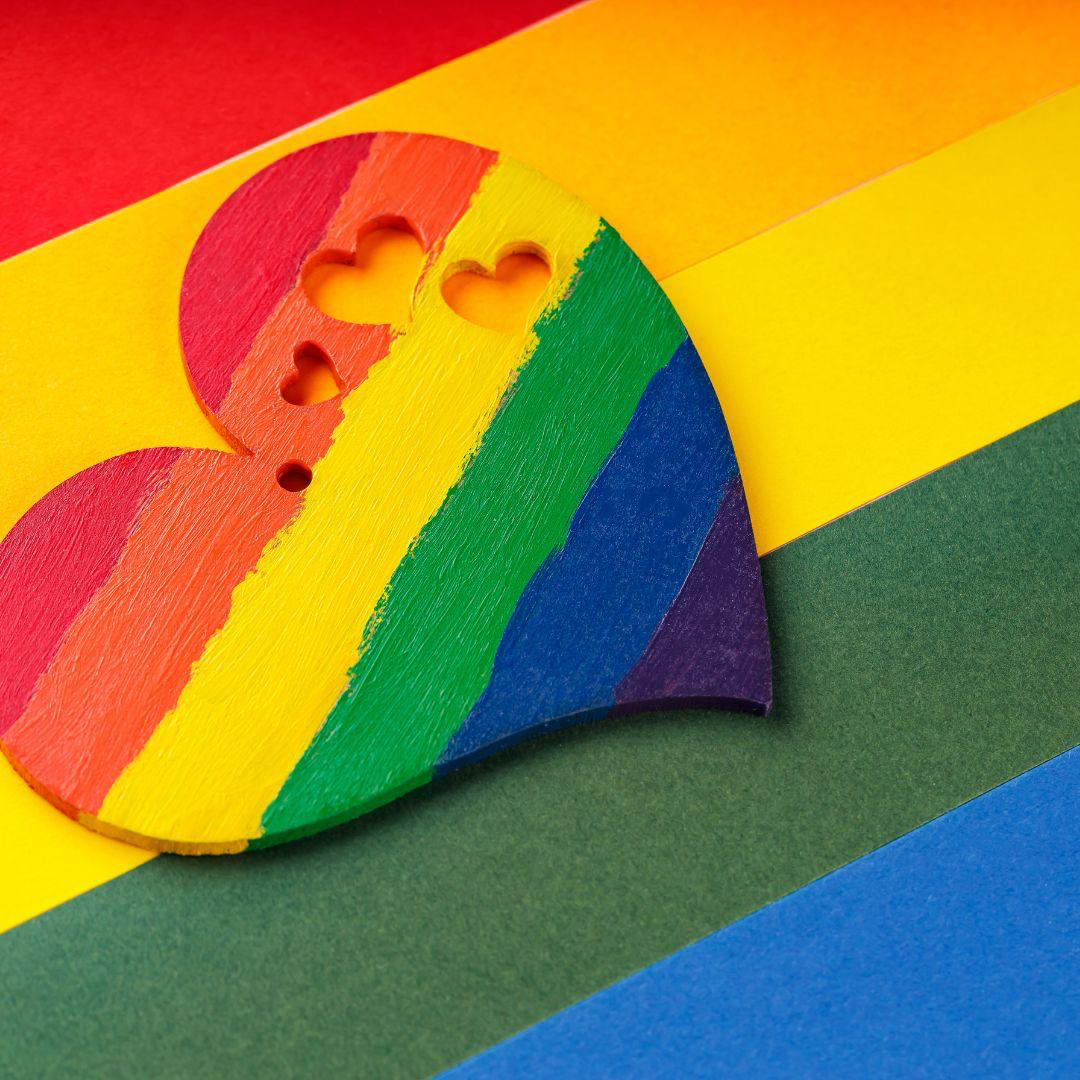
Navigating the Struggles: Disparities Faced by LGBTQ+ Youth

During the exciting time of adolescence, LGBTQ+ youths navigate a landscape colored by both progress and persistent challenges. While strides have been made in societal acceptance and legal recognition, disparities persist, casting a large shadow over the experiences of many LGBTQ+ adolescents.
- Mental Health Challenges
- A study by the Centers for Disease Control and Prevention (CDC) found that LGBTQ+ students are more likely to experience feelings of sadness and hopelessness.
- LGBTQ+ youth are twice as likely to experience symptoms of depression compared to their heterosexual peers (CDC).
- According to the Trevor Project, LGBTQ+ youths are almost five times more likely to have attempted suicide compared to their heterosexual peers.
- Over 40% of transgender individuals have reported attempting suicide at some point in their lives (American Foundation for Suicide Prevention).
- A study by the Centers for Disease Control and Prevention (CDC) found that LGBTQ+ students are more likely to experience feelings of sadness and hopelessness.
- Bullying and Harassment
- Statistics from the GLSEN (Gay, Lesbian, and Straight Education Network) show that more than 85% of LGBTQ+ students report experiencing verbal harassment, while over half face physical harassment at school.
- 91% of LGBTQ+ students reported hearing “gay” used in a negative way frequently or often at school (GLSEN).
- LGBTQ+ students are twice as likely to report being physically assaulted, kicked, or shoved at school compared to their heterosexual peers (CDC).
- Statistics from the GLSEN (Gay, Lesbian, and Straight Education Network) show that more than 85% of LGBTQ+ students report experiencing verbal harassment, while over half face physical harassment at school.
- Homelessness and Displacement
- According to the Trevor Project, 28% of LGBTQ+ youth reported experiencing homelessness or housing instability at some point in their lives.
- Homelessness and housing instability were reported at higher rates among both transgender and nonbinary youth, including 38% of transgender girls/women, 39% of transgender boys/men, and 35% of nonbinary youth, compared to 23% of cisgender youth (The Trevor Project).
- 16% of LGBTQ+ youth reported that they slept away from parents or caregivers because they ran away from home, with more than half (55%) reporting that they ran away from home because of mistreatment or fear of mistreatment due to their LGBTQ+ identity (The Trevor Project).
- 14% of LGBTQ+ youth reported that they had slept away from parents or caregivers because they were kicked out or abandoned, with 40% reporting that they were kicked out or abandoned due to their LGBTQ+ identity (The Trevor Project).
- According to the Trevor Project, 28% of LGBTQ+ youth reported experiencing homelessness or housing instability at some point in their lives.
- Healthcare Disparities
- LGBTQ+ adolescents often encounter barriers to accessing culturally competent healthcare services. A study published in Pediatrics found that transgender and gender-nonconforming youths are less likely to have health insurance coverage and more likely to postpone necessary medical care due to discrimination and fear of mistreatment.
- 29% of transgender adults report being denied healthcare due to their gender identity (National Center for Transgender Equality).
- LGBTQ+ individuals are more likely to delay or forgo medical care due to cost concerns, with transgender individuals being particularly affected (Kaiser Family Foundation).
- LGBTQ+ adolescents often encounter barriers to accessing culturally competent healthcare services. A study published in Pediatrics found that transgender and gender-nonconforming youths are less likely to have health insurance coverage and more likely to postpone necessary medical care due to discrimination and fear of mistreatment.
- Academic Achievement and Dropout Rates
- Despite progress in LGBTQ+ rights, disparities in educational outcomes persist. The National Center for Transgender Equality reports alarmingly high dropout rates among transgender students, with nearly one-third of respondents saying they had been unable to complete high school due to harassment, violence, or lack of support.
- LGBTQ+ students are twice as likely as their heterosexual peers to say they have been threatened or injured with a weapon on school property (CDC).
- 85% of LGBTQ+ students reported being verbally harassed at school, with over half experiencing cyberbullying (GLSEN).
- Despite progress in LGBTQ+ rights, disparities in educational outcomes persist. The National Center for Transgender Equality reports alarmingly high dropout rates among transgender students, with nearly one-third of respondents saying they had been unable to complete high school due to harassment, violence, or lack of support.
The statistics can be shocking and overwhelming, but there are ways that we can all begin to change these statistics, whether big or small. When we breakdown each disparity mentioned above, we can begin to do the following:
- Mental Health Challenges
- Inclusive Mental Health Services: Ensure that mental health services are inclusive and affirming for LGBTQ+ youth. Train mental health professionals the unique needs and challenges faced by LGBTQ+ adolescents.
- Peer Support Programs: Establish peer support groups where LGBTQ+ youth share experiences and receive support from others who understand their challenges.
- Access to Resources: Increase access to mental health resources, such as hotlines, online counseling, and community centers that specialize in LGBTQ+ issues.
- Bullying and Harassment
- Anti-Bullying Policies: Implement and enforce comprehensive anti-bullying policies in schools that specifically address LGBTQ+ harassment.
- Education and Training: Provide training for teacher, staff, and students on LGBTQ+ issues, fostering a culture of inclusion and respect.
- Support Systems: Create safe spaces and support systems within schools, such as Gay-Straight Alliances (GSAs), where LGBTQ+ students can feel safe and supported.
- Homelessness and Displacement
- Housing Programs: Develop and fund housing programs specifically for LGBTQ+ youth who are at risk of homelessness. This includes emergency shelters and long-term housing solutions.
- Family Support Services: Offer counseling and support services to families to prevent displacement due to rejection based on sexual orientation or gender identity.
- Community Outreach: Partner with community organizations to provide resources and support for homeless LGBTQ+ youth, including job training and education opportunities.
- Healthcare
- Inclusive Healthcare Policies: Ensure that healthcare policies are inclusive and provide coverage for LGBTQ+ specific needs, such as hormone therapy for transgender youth.
- Training for Healthcare Providers: Train healthcare providers on the unique health needs of LGBTQ+ adolescents and the importance of creating a welcoming environment.
- Access to Care: Improve access to healthcare by providing services in schools and community centers and offering telehealth options.
- Academic Achievement and Dropout
- Inclusive Curriculum: Incorporate LGBTQ+ topics into the school curriculum to foster understanding and reduce stigma.
- Supportive Educators: Train educators to be allies and provide support to LGBTQ+ students, helping them navigate academic and social challenges.
- Mentorship Programs: Develop mentorship programs that connect LGBTQ+ youth with role models and mentors who can offer guidance and support in their academic and personal lives.
There are also a few additional strategies:
- Legislation and Advocacy
- Advocate for policies and legislation that protect the rights of LGBTQ+ youth in all areas of life.
- Community Involvement
- Engage community organizations, parents, and allies in creating a supportive network for LGBTQ+ adolescents.
- Research and Data Collection
- Conduct research to better understand the specific needs and challenges of LGBTQ+ youth and use this data to inform policies and programs.
Teen Health Connection also offers many services for LGBTQ+ adolescents. Those services include:
- Center for Gender Health
- In association with Atrium Health Levine Children’s Center for Gender Health, we have a team of physicians and behavioral health clinicians who support the care of an adolescent’s gender identity and in a setting that helps them feel welcome and accepted.
- The Center for Gender Health is for adolescents who do not identify with their assigned sex at birth, such as transgender and nonbinary youth. Gender-affirming care has been shown to enhance overall health and feelings of self-worth.
- Behavioral Health Services
- We have 11 behavioral health clinicians, each one bringing a unique skill set to meet the needs of adolescents, including struggles uniquely faced by LGBTQ+ youth. Our areas of expertise are:
- Anxiety
- Depression
- Grief and loss
- Trauma
- Family conflict
- Anger management
- Attention-deficit hyperactivity disorder
- Gender Health
- Eating disorders
- Adjustment disorders
- Stress with chronic medical conditions
- We have 11 behavioral health clinicians, each one bringing a unique skill set to meet the needs of adolescents, including struggles uniquely faced by LGBTQ+ youth. Our areas of expertise are:
If you would like to learn more about our services, visit our website at https://teenhealthconnection.org/.
Tips for Parents on Normalizing Conversations About LGBTQ+
As we celebrate Pride Month, it’s essential to remind our teens that equality, acceptance, and celebration of everyone are fundamental values. Encouraging our children to embrace diversity, respect differences, and stand up for the rights of all individuals fosters a more inclusive and compassionate society. Every person matters, and there are no exceptions to that. By advocating for and modeling these principles, we empower our teens to build a world where everyone can live authentically and with pride.
Some resources for parents of LGBTQ+ youth are:
- Gender Spectrum: this is a great resource to help parents/guardians with understanding of their child’s gender identity and contains many informative documents across many areas such as families, education, and medical and mental health (https://www.genderspectrum.org/resources).
- PFLAG: is the nation’s largest organization dedicated to supporting, educating, and advocating for LGBTQ+ people and those who love them (https://pflag.org/).
- Strong Family Alliance: this is an organization who can help parents become more informed about the LGBTQ+ community and how they can best support their child (https://www.strongfamilyalliance.org/).
Can you please include resources for parents of LGBTQ+ youth here? Check out this link: https://www.thetrevorproject.org/resources/article/friends-family-support-systems-for-lgbtq-youth/
Resources
American Foundation for Suicide Prevention: American Foundation for Suicide Prevention. “Facts and Figures.” AFSP, afsp.org/about-suicide/suicide-statistics.
Centers for Disease Control and Prevention (CDC): Centers for Disease Control and Prevention. “Lesbian, Gay, Bisexual, and Transgender Health.” CDC, www.cdc.gov/lgbthealth/youth.htm.
Gay, Lesbian, and Straight Education Network (GLSEN): Gay, Lesbian, and Straight Education Network. “2019 National School Climate Survey.” GLSEN, www.glsen.org/research/2019-national-school-climate-survey.
Kaiser Family Foundation: Kaiser Family Foundation. “Health and Access to Care and Coverage for Lesbian, Gay, Bisexual, and Transgender (LGBT) Individuals in the U.S.” KFF, https://www.kff.org/racial-equity-and-health-policy/issue-brief/health-and-access-to-care-and-coverage-for-lesbian-gay-bisexual-and-transgender-individuals-in-the-u-s/.
National Center for Transgender Equality: National Center for Transgender Equality. “National Transgender Discrimination Survey Report on Health and Healthcare.” NCTE, https://cancer-network.org/wpcontent/uploads/2017/02/National_Transgender_Discrimination_Survey_Report_on_health_and_health_care.pdf.
The Trevor Project. “Homelessness and Housing Instability Among LGBTQ Youth-Feb 2022.” The Trevor Project, https://www.thetrevorproject.org/resources/article/friends-family-support-systems-for-lgbtq-youth/
True Colors United: True Colors United. “Homelessness Among LGBTQ Youth.” True Colors United, truecolorsunited.org/homelessness.


